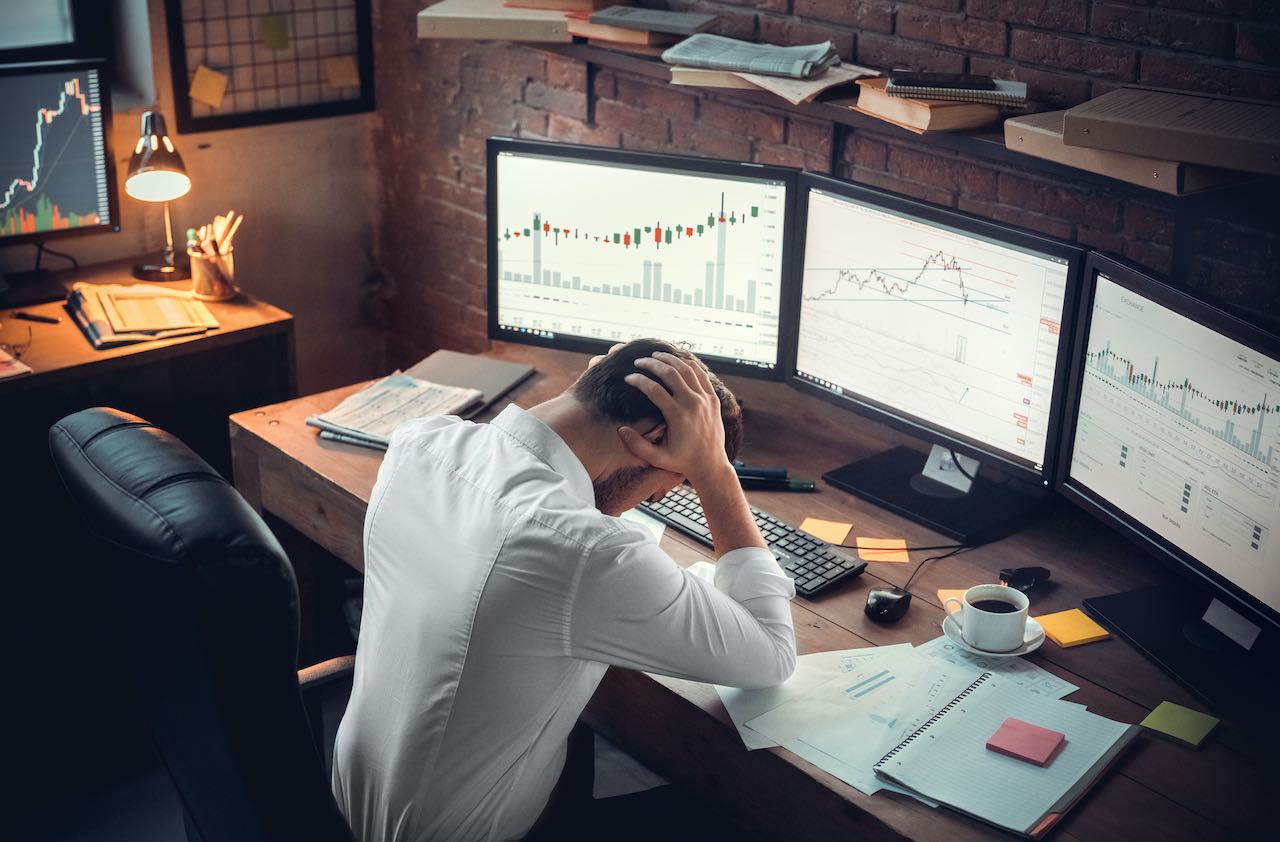How Investors Actually Fare in Mutual Funds
Too often, fund investors chase past performance only to hurt themselves in the end. Ground-breaking data from Morningstar takes a close look at this topic.

Statistics abound on how funds perform. But how are investors performing? After all, you earn a fund's stated return over a given time period only if you actually held the fund's shares throughout that precise period. But if you bought high and sold low, you almost certainly haven't done as well as a fund's reported return implies.
For years, some observers have essentially suggested that ordinary investors are idiots -- that they buy funds too late after they turn hot and sell too late after they turn cold. Is that true? I've been fascinated by the subject of investor returns -- or dollar-weighted returns -- for years, but there has been a dearth of reliable data. Now, Morningstar is finally beginning to provide it.
Examining these results can make you a better investor. In one set of data, Morningstar divided up funds by volatility. In the one-fourth of funds that were the most volatile, investors earned an annualized 5.3% over the past ten years, while the funds themselves returned 8.1% annualized (all returns in this article are for the ten years that ended September 30). That's leaving a lot of money on the table. But in the one-fourth of funds that were the least volatile, investors and the funds returned exactly the same amount: 8.9%.

Sign up for Kiplinger’s Free E-Newsletters
Profit and prosper with the best of expert advice on investing, taxes, retirement, personal finance and more - straight to your e-mail.
Profit and prosper with the best of expert advice - straight to your e-mail.
The lesson is pretty clear: Be wary of volatile funds. Before you buy a highly volatile fund, make sure you're the kind of investor who will stay put, rather than bail after a period of sour performance. "Investors know they should hold diversified portfolios, but many chase past performance and end up buying funds too late or selling too soon," says Don Phillips, managing director of Morningstar.
Crunching the numbers
What's an investor return? It's how much money the average dollar invested in a fund actually earns. Think of it this way: If a fund rises sharply while it has just a small amount of money invested, then flattens out after money pours in, the average investor will do far worse than the fund's total return. And that's what often happens.
Just because a fund goes up 15% or even 20% in a year doesn't mean that each investor in the fund makes that much. It's common sense: Suppose you only had your money in the fund six months. Suppose further that you had the misfortune to be invested during a time when the fund didn't go up at all -- or even went down.
In some categories, investors have beaten the average fund. The average investor in value-style funds has outstripped the average fund by 0.6 of a percentage point annually. Investors in balanced funds have bested the average fund by 1.8 percentage points per year.
Investors trail the average U.S. diversified fund by 0.6 percentage point per year. Interestingly, investors in institutional U.S. diversified funds -- which are typically bought by big investors, such as pension funds -- lag the average fund funds by 0.5 of a percentage point per year. So the pros aren't much better than the amateurs.
Investors in no-load U.S. diversified funds with investment minimums of $10,000 or less do a lot worse than the average no-load fund in that broad category. The average such fund returned an annualized 8.1%. Meanwhile, the average investor made 6.5%. That's a gap of 1.6 percentage points. Investors in diversified domestic funds that levy sales charges also earned 6.5%. However, instead of losing return to poor timing and fund selection, they lose it by paying sales commissions: The average load fund returned an annualized 7.2% (that figure is not adjusted for front-end or back-end sales charges but would, of course, reflect the impact of stiff 12b-1 annual fees that are part and parcel of B class and C class fund shares).
Sector funds are a challenge for investors. They returned an annualized 10% the past ten years, but hapless investors in those funds earned only 7.6% annualized.
In growth funds, as a whole, investors have trailed the funds by 1.4 percentage points per year.
But investors don't do as badly in all types of funds. In lifecycle funds, investor returns and total returns have been almost identical over the past ten years. The average fund has beaten the average investor by 0.2 of a percentage point annually. Thus, the move to target retirement funds, which are included in this category, seems a healthy one.
The bottom line
Investors should investigate a fund's volatility, as well as its long-term returns, before investing (the best measure of volatility is standard deviation; the raw numbers aren't as important as the relative figure between a fund and appropriate benchmarks or category averages). Interestingly, the Morningstar results show that investors do a fairly good job of picking good funds. Where they tend to fall down is in timing their purchases and sales.
"Assets clearly flow to lower cost, proven funds," Phillips says. "That's the easier part of the equation. The trickier part is deploying investments correctly. You can have a series of good funds and still have a bad portfolio through bad diversification or poor timing. The usage of funds is the more mission-critical part of successful investing."
Morningstar has begun a valuable discussion on investor returns. I hope that it continues, and that investors pay attention to it.
Steven T. Goldberg is an investment adviser and freelance writer.
Get Kiplinger Today newsletter — free
Profit and prosper with the best of Kiplinger's advice on investing, taxes, retirement, personal finance and much more. Delivered daily. Enter your email in the box and click Sign Me Up.

-
 10 Major AI Companies You Should Know
10 Major AI Companies You Should KnowThese 10 AI companies are at the forefront of machine learning. Find out how they’re driving innovation and jostling to be the biggest players in the game.
By Tom Taulli Published
-
 How Baby Boomers and Gen Xers Are Redefining Retirement Living
How Baby Boomers and Gen Xers Are Redefining Retirement LivingBoth generations need to embrace change and leverage real estate as a dynamic asset in their retirement planning. Here's how financial advisers can help, too.
By David Conti, CPRC Published
-
 ESG Gives Russia the Cold Shoulder, Too
ESG Gives Russia the Cold Shoulder, TooESG MSCI jumped on the Russia dogpile this week, reducing the country's ESG government rating to the lowest possible level.
By Ellen Kennedy Published
-
 Morningstar Fund Ratings Adopt a Stricter Curve
Morningstar Fund Ratings Adopt a Stricter Curveinvesting Morningstar is in the middle of revamping its fund analysts' methodology. Can they beat the indices?
By Steven Goldberg Published
-
 Market Timing: The Importance of Doing Nothing
Market Timing: The Importance of Doing NothingInvestor Psychology Investors, as a whole, actually earn less than the funds that they invest in. Here’s how to avoid that fate.
By Steven Goldberg Published
-
 Commission-Free Trades: A Bad Deal for Investors
Commission-Free Trades: A Bad Deal for Investorsinvesting Four of the biggest online brokers just cut their commissions to $0 per transaction. Be careful, or you could be a big loser.
By Steven Goldberg Published
-
 Vanguard Dividend Growth Reopens. Enter at Will.
Vanguard Dividend Growth Reopens. Enter at Will.investing Why you should consider investing in this terrific fund now.
By Steven Goldberg Published
-
 Health Care Stocks: Buy Them While They're Down
Health Care Stocks: Buy Them While They're Downinvesting Why this sector should outperform for years to come
By Steven Goldberg Published
-
 Buy Marijuana Stocks Now? You'd Have to Be Stoned.
Buy Marijuana Stocks Now? You'd Have to Be Stoned.stocks Don't let your investment dollars go to pot
By Steven Goldberg Published
-
 4 Valuable Lessons From the 10-Year Bull Market
4 Valuable Lessons From the 10-Year Bull MarketInvestor Psychology Anything can happen next, so you must be mentally prepared.
By Steven Goldberg Published